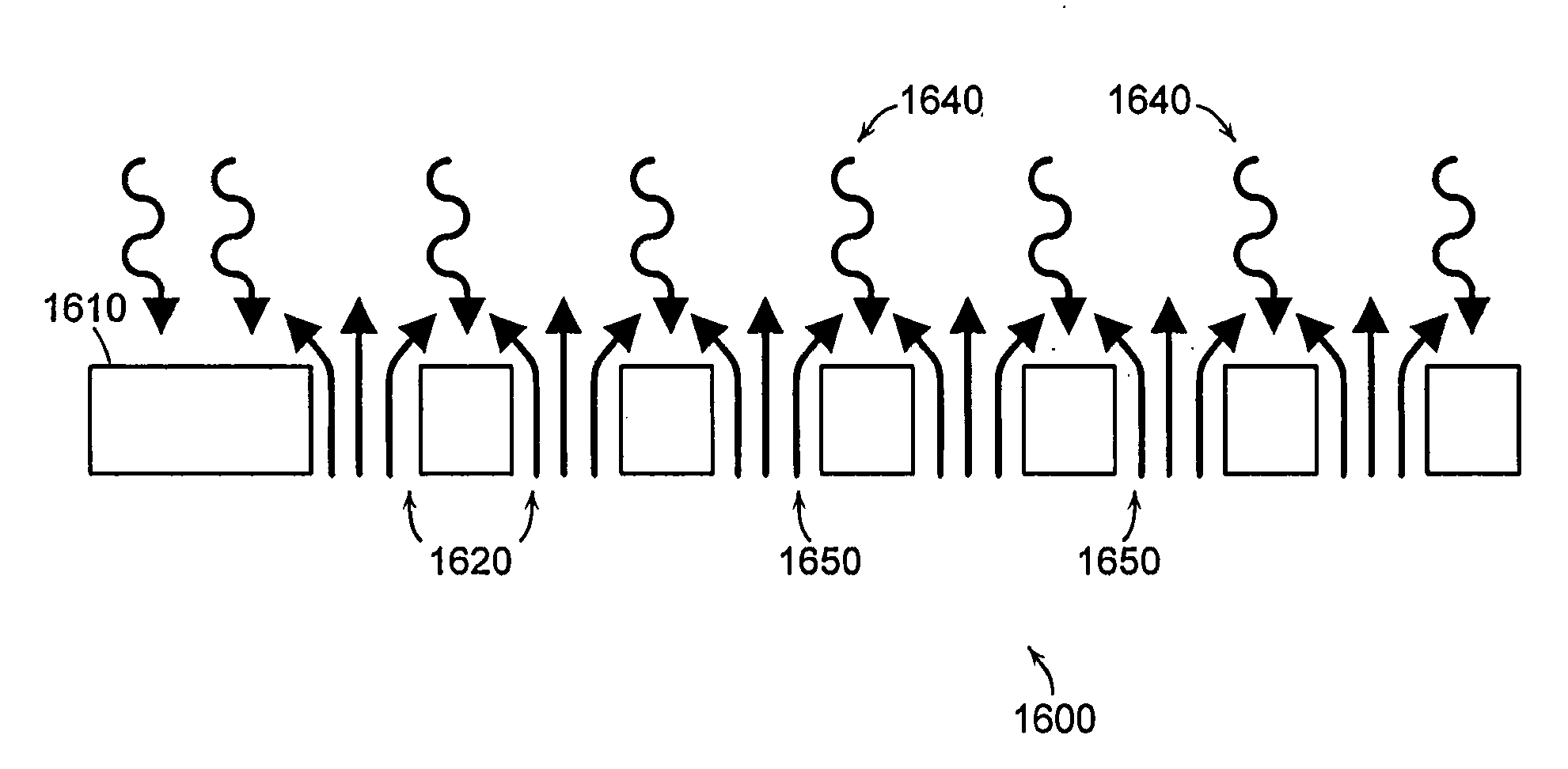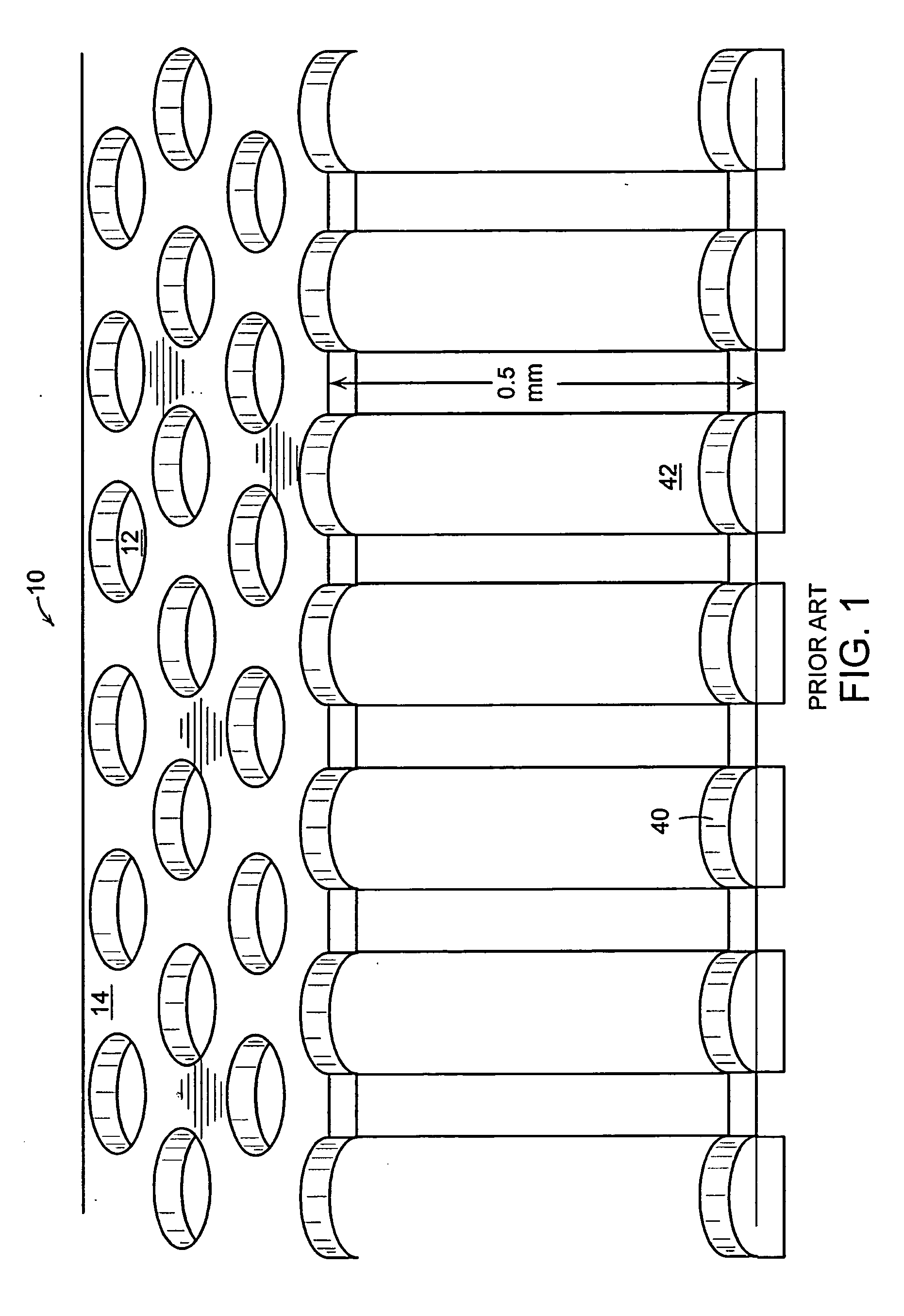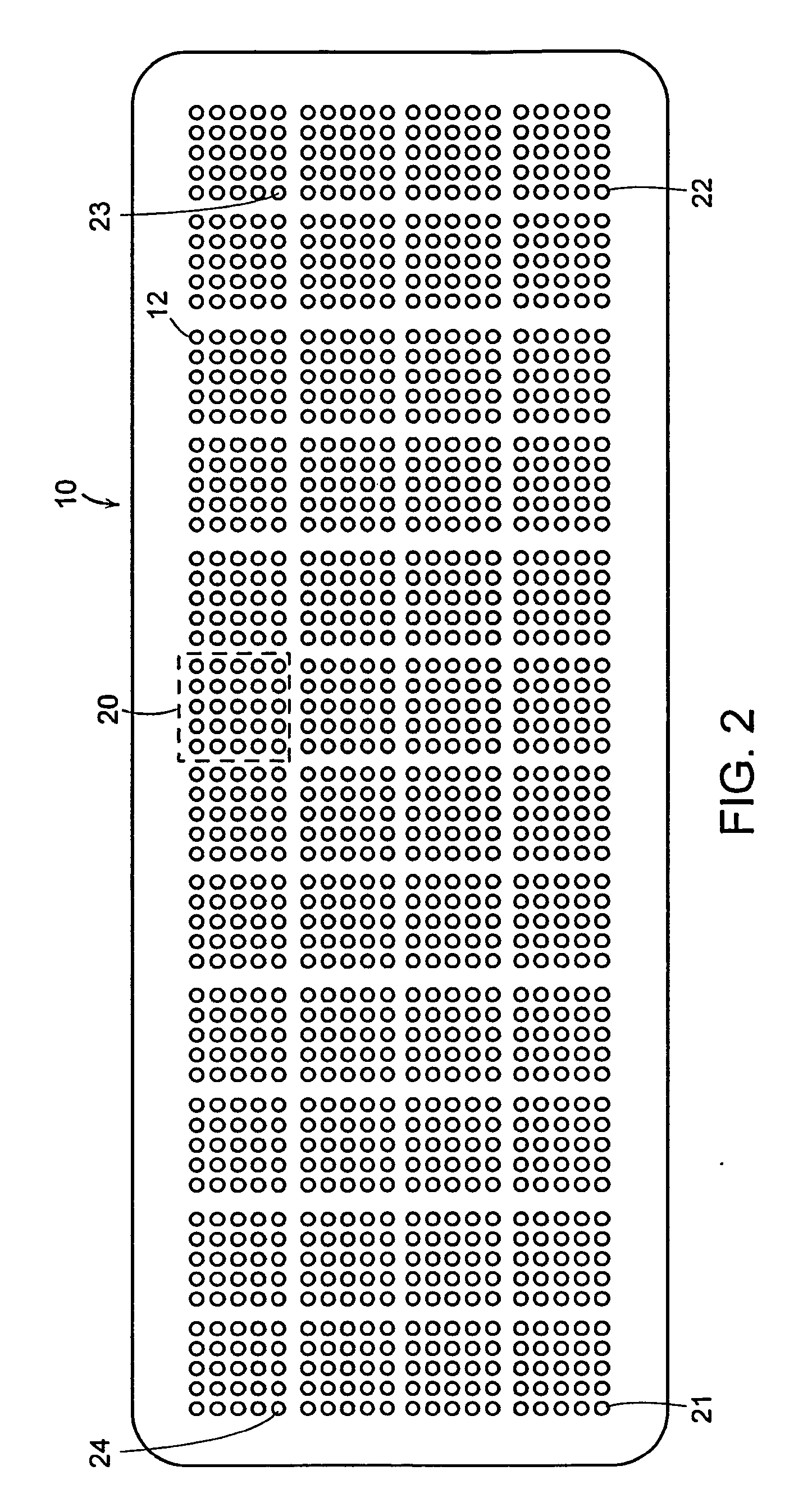Coating Process for Microfluidic Sample Arrays
a microfluidic array and coating technology, applied in the field of techniques, can solve the problems of inability to properly load the microfluidic array with samples, difficult to transfer large collections of fluid samples such as tissue samples stored in 96- or 384-well plates into more efficient high density arrays of nanoliter receptacles, and complex preparation and processing of nanoliter chips, etc., to achieve high surface tension, low surface tension, and high surface tension
- Summary
- Abstract
- Description
- Claims
- Application Information
AI Technical Summary
Benefits of technology
Problems solved by technology
Method used
Image
Examples
example 1
[0261]A surface exposes a carboxylic acid moiety. A solution is prepared with 6-arm polyethylene glycol terminated with —NH2 and —COOH each and (1-Ethyl-3-[3-dimethylaminopropyl]carbodiimide hydrochloride). The carboxylic acid-containing surface is exposed to the solution of polyethylene glycols. If necessary, the solution can be dried on the surface and incubated at elevated temperature to improve the yield of cross-linking between amine and carboxylic acid groups. The resulting surface should show a thick, covalently-attached PEG film.
[0262]Formation of Thick Films of Polyelectrolytes by Layer-to-Layer Adsorption
[0263]A surface is exposed to a solution of polycations and polyanions sequentially. By electrostatic attraction, a film of polycation / polyanion is formed on the surface.
[0264]Differential Coating from Hydroxyl-Terminated Surface
[0265]The exterior and interior surfaces of OpenArray chip are uniformly coated with a film exposing hydroxyl groups. Then, the chip is treated wi...
example 2
[0278]The chip is coated with a hydrophobic silane and a photomask is placed over the chip such that light may only access the interior of the channels. This assembly is exposed to a high energy UV light. The assembly may be subjected to a flow of oxygen to create reactive oxygen species. The combination of light and reactive oxygen cleans the exposed surfaces rendering them hydrophilic and capable of being further derivatized.
example 3
[0279]The chip is coated with a hydrophilic silane such as a PEG silane and a set of photomasks is placed over the chip such that light may only access the exterior surfaces of the array. The array is then exposed to a hydrophobic silane to create the patterned array.
[0280]In such a process, patterned substrates of metal, particularly stainless steel chips, are created through the process of photochemically etching from both sides. This two-sided etching of the through-hole walls creates an hourglass shape for the through-holes, when viewed in cross-section. The resulting “throat” created in the metal chip may be employed for advantage in that one may differentially react, or treat, parts of the channel interior. For example, the top half of the channel could be left hydrophobic, and the bottom half cleaned to become hydrophilic, then optionally coated with a PEG silane. Alternately, a silane with a photoactivated linker moiety may be employed to create reactivity toward a modifying...
PUM
 Login to View More
Login to View More Abstract
Description
Claims
Application Information
 Login to View More
Login to View More - R&D
- Intellectual Property
- Life Sciences
- Materials
- Tech Scout
- Unparalleled Data Quality
- Higher Quality Content
- 60% Fewer Hallucinations
Browse by: Latest US Patents, China's latest patents, Technical Efficacy Thesaurus, Application Domain, Technology Topic, Popular Technical Reports.
© 2025 PatSnap. All rights reserved.Legal|Privacy policy|Modern Slavery Act Transparency Statement|Sitemap|About US| Contact US: help@patsnap.com



